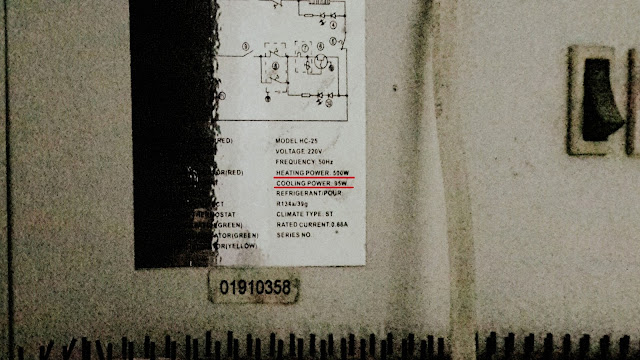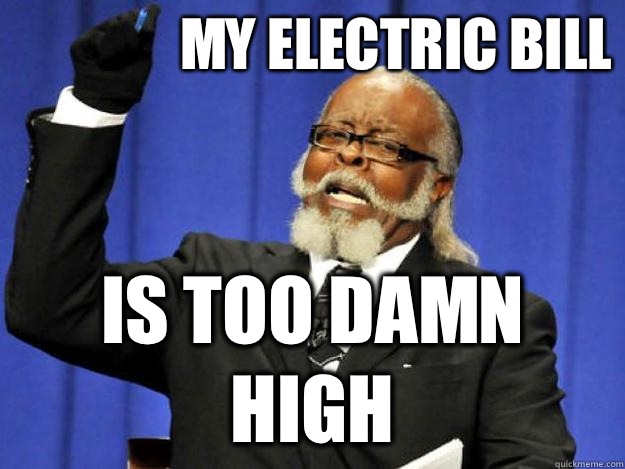Saving Energy a Professional Way - How do you do it? | LEVEL::INTERMEDIATE
Do You feel like this
When it comes to work, we need energy. All living creatures to man made machines, they all consume energy to perform work. But the world we are living in, which is this earth, we do not have a lot of it and there is a problem of efficiency of performance of certain things which totally depend on the energy consumption. In a nutshell, huge amount of energy is consumed on regular purposes daily which is a requirement of every single machine we have, electrical or mechanical. We can actually work out on our equations to find the best possible way of reducing the consumption of energy ensuring that the efficiency is in no way affected negatively. We can either reduce the sink's temperature rising the source's temperature or do the other way round, by using the correct combinations of Isobaric expansion/compression, Isochoric expansion/compression, Isothermal processes and Adiabatic concepts. There are many things which we can do. Here in this article; we will discuss something electrical, find out ways we can save electrical energy and hence save our bills which is our most important concern and a reason to why you are reading this article.
When it comes to work, we need energy. All living creatures to man made machines, they all consume energy to perform work. But the world we are living in, which is this earth, we do not have a lot of it and there is a problem of efficiency of performance of certain things which totally depend on the energy consumption. In a nutshell, huge amount of energy is consumed on regular purposes daily which is a requirement of every single machine we have, electrical or mechanical. We can actually work out on our equations to find the best possible way of reducing the consumption of energy ensuring that the efficiency is in no way affected negatively. We can either reduce the sink's temperature rising the source's temperature or do the other way round, by using the correct combinations of Isobaric expansion/compression, Isochoric expansion/compression, Isothermal processes and Adiabatic concepts. There are many things which we can do. Here in this article; we will discuss something electrical, find out ways we can save electrical energy and hence save our bills which is our most important concern and a reason to why you are reading this article.
So what's a professional way to check out for your bills, the units of energy your appliances are consuming and check for any appliances which are leaking power.
Leaking Power
Every appliance you are using are wired to the main voltage supply, there is no doubt in that. But the things you need to look out for are these but first safety should be your number one priority:
1. Check if your wire is not worn out.
2. Check if your wire is 90%+ made of copper.
3. Check if your power output is perfectly fitted with no lose connection, switches and sockets are perfect.
2. Check if your wire is 90%+ made of copper.
3. Check if your power output is perfectly fitted with no lose connection, switches and sockets are perfect.
If your wire is worn out then it is leaking power, which means your appliance is consuming more energy due to that worn out wire.
If it's okay, check if your wire is mainly made up of copper. Let's talk about copper a little with some science. Copper is a transitional metal with a golden-reddish color, the electrons detaches itself easily from the copper atom. With the voltage supply, the electrons start to flow which in common terms is known as electricity. Plus, copper is a lot cheaper than other good conductors.
Even if this is okay, look into your power output by opening the electric board and check if switches and sockets are working just fine and are not burnt in any way. Replace switches and sockets if there is a problem with it physically.
You have successfully checked for your power leakages!
Count Your Appliances
This is an easy job, you just wander around your house and count every single appliance you have. Download and print this audit report and write your appliances in it, write down the quantity of each type of appliances you have with its power rating. Power rating is written on the back of every appliance on a silver plate.
For example, in our studio room we have four LED bulbs each have a power rating of 7 Watt, therefore we'll write LED bulb in first column, four in second and power rating in third. Continue reading this article after you are done with filling your audit report.
Oh yes, we forgot to mention the running time period of appliances per day in hours. Fill your audit report like this down below with the inclusion of time in hours:
 |
| Silver plate of Water Dispenser |
For example, in our studio room we have four LED bulbs each have a power rating of 7 Watt, therefore we'll write LED bulb in first column, four in second and power rating in third. Continue reading this article after you are done with filling your audit report.
Oh yes, we forgot to mention the running time period of appliances per day in hours. Fill your audit report like this down below with the inclusion of time in hours:
To help you fill up your audit report, here is a list of power ratings of various home appliances which are commonly present in a usual home. CLICK HERE TO VIEW THE LIST!
Let's Calculate
After you have filled your report with precision, it's now time to do the maths. These are the steps for proper calculation for daily cost:
Plug in your values in the above equation and get your answer.
Updated 8/27/2017: BUT In order to save your time, you can use our Fast Electric Power Calculator that does your calculation job real quick. It immediately calculates everything and will give you your daily bill generating a clear report.
It is free: GET IT HERE!
Source code: Fast Electric Power Calculator
You're almost complete
Yes you are! You can now multiply your daily bills by 30 to get an approximation of your monthly bills. It will not be the same result but would be close enough to at least give you an idea. That's it, you are done and complete. You will now have an idea of which appliances are consuming a lot of energy so you can replace them and get an efficient appliance that saves energy and money.
Must remember that using the our software or your own calculation, you calculate the Real Power (P). If you want to calculate the Apparent Power (S) because it is not mentioned behind appliances, then just let your Power Factor is around 0.75 ~ 0.8 and use this formula to calculate S:
You can also calculate Reactive Power (Q) by using this formula:
But really, knowing S and Q are meaningless when you are calculating your monthly bill.
Now you can professionally look out for your future bills and can save energy a professional way. Thanks for utilizing your time reading this article.
Let's Calculate
After you have filled your report with precision, it's now time to do the maths. These are the steps for proper calculation for daily cost:
- Multiply power (SI: Watt) of an appliance with its quantity present in you home.
- Multiply the answer with the average operational hours (SI: Hours).
- Divide the answer with 1000 to calculate the energy (SI: Joules)
- Multiply your energy with the rate of unit (check your electricity bills) to get the total cost of an appliance per day.
Plug in your values in the above equation and get your answer.
Updated 8/27/2017: BUT In order to save your time, you can use our Fast Electric Power Calculator that does your calculation job real quick. It immediately calculates everything and will give you your daily bill generating a clear report.
 |
| Fast Electric Power Calculator 2017 License: Open-Source |
Source code: Fast Electric Power Calculator
You're almost complete
Yes you are! You can now multiply your daily bills by 30 to get an approximation of your monthly bills. It will not be the same result but would be close enough to at least give you an idea. That's it, you are done and complete. You will now have an idea of which appliances are consuming a lot of energy so you can replace them and get an efficient appliance that saves energy and money.
Must remember that using the our software or your own calculation, you calculate the Real Power (P). If you want to calculate the Apparent Power (S) because it is not mentioned behind appliances, then just let your Power Factor is around 0.75 ~ 0.8 and use this formula to calculate S:
You can also calculate Reactive Power (Q) by using this formula:
But really, knowing S and Q are meaningless when you are calculating your monthly bill.
Now you can professionally look out for your future bills and can save energy a professional way. Thanks for utilizing your time reading this article.













 #ref-menu
#ref-menu
Post A Comment
No comments :